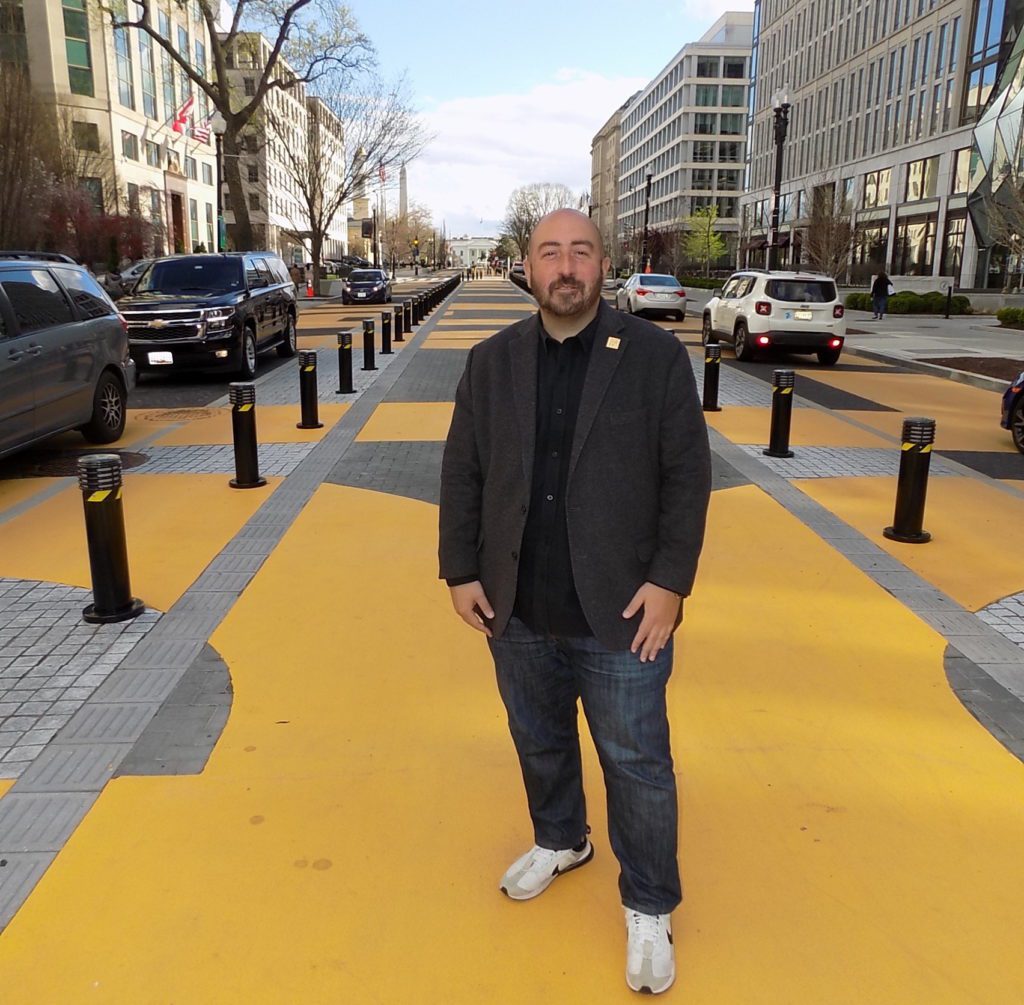Dep. Mayor Falcicchio Has Full Tray of Development Ideas
By • April 13, 2022 One Comment 2047

John Falcicchio, the Deputy Mayor for Planning and Economic Development, is just the opposite of what one might think of as a remote, top city bureaucrat with many titles and vague duties. For one thing, Falcicchio is hands-on in charge of the oversight, planning and project development of some 13 city departments and commissions that make up the unglamorous acronym DMPEC. They include cluster agencies and commissions such as the offices of Planning, of Public and Private Partnerships and of Housing and Community Development as well as independent agencies dealing with housing finance and tenant advocacy, zoning and of real property tax appeals. His portfolio includes the Arts Commission and the Office of Cable TV, Film, Music and Entertainment. And he oversees the Dept. of Small and Local Business Development (DSLBD), among others.
On top of all that, Falcicchio is Mayor Bowser’s chief of staff and long-time assistant and confidante. His presence is almost ubiquitous in the most visible evolving development projects in the city.
But incredibly Falcicchio (he says humorously to pronounce his difficult last name “John”) is relaxed, friendly, open, knowledgeable and happy to talk about, it seems, every facet of his agencies’ projects. He’s confidently enthusiastic about the prospects for D.C.’s future. He talks eagerly during an interview but not overly; he stays completely engaged and listening, nodding, acknowledging the questions and answering them directly. Not once during the one-hour-long interview with The Georgetowner at the St. Regis on 16th Street did he take out his phone to do a quick scan of emails or turn to his communications director to ask her to “get back to us” on a question. His two favorite terms for the District’s multifaceted recovery seemed to be “imagining” and “innovation.”
The options for D.C. economic development after the two-year pandemic that basically shut down the downtown area, eviscerated popular, historic and favorite small businesses that were sacred in the dozens of neighborhoods that comprise the eight wards of the city, are many, according to Falcicchio. But there will be changes. Things won’t be the same.
Top priority for economic development is to get the D.C. work force back to in-person, in-office work, according to the deputy mayor. Tens of thousands of federal and association workers used to come into the city every day to work downtown — especially on K Street. They spent an average of $40 a day in local support businesses. “We have to get them back,” Falcicchio said. “But we won’t get them all.” Falcicchio expects that remote work will become part how people work from now on. Most of the professional work force will come to the office maybe three days out of five a week. Offices will shrink. The day-workers won’t need as many side services. They’ll have less patience for commuting, even by public transportation.
Some of the solutions Falcicchio and his planners are considering involve converting office spaces to condos and residences, including lots of affordable housing for service workers from hospitality and sanitation employees to teachers, first responders, emergency and medical personnel. “We see our future in providing vibrant space for people in fed, in ed and in med particularly to work and reside right in the District,” Falcicchio said. That includes workers in industries of all kinds — energy, high tech, digital businesses — not so much the manufacturing employees but the corporate professionals (the C crowd), the ones who need to be close to the feds to represent their interests in taxation, regulation and competition issues.
The District is already investing in four huge new property development projects similar to the development of the Wharf in the underdeveloped areas of SE Washington and the St. Elizabeth campus, said Falcicchio, adding that private-public partnerships will increasingly be the vehicle to supply the investment and management aspects.
What about our part of the ’hood, Georgetown? Falcicchio emphasized the importance of continuing the development and top maintenance of the historic C&O Canal as a special Georgetown attraction for businesses and tourists. (He mentioned the gondola.) But mainly he referred to the District’s increased support of planning by the Georgetown Business Improvement District and Main Street non-profits working with the DSLBD, to get local ideas planned and developed. As a model example he pointed out the impressive partnerships of Georgetown’s parks between the National Park Service, the District Parks and Recreation Department, the neighborhood parks’ “Friends” groups and community non-profit organizations, such as the Georgetown Garden Club.
Falcicchio’s vision is involved communities imagining innovative, projects, new ways to do things collaboratively and in new forms of partnerships. The 42-year-old said he fell in love with the challenge of community governance and politics when he came to the nation’s capital from Jersey City, New Jersey, as a graduate of St. Peter’s Prep to attend the Catholic University of America. He never left.
He credits his knowledge and skills to the mentorship of great bosses like Mayors Adrian Fenty and Muriel Bowser. He recalled with admiration Bowser’s adroit and quick reaction to the George Floyd protests as well as President Trump’s photo op at St. John’s Church at Lafayette Park that resulted in a section of 16th Street NW being renamed Black Lives Matter Plaza in June 2020. And, no, Falcicchio assured us, he is not interested in running for office.


You have a great job